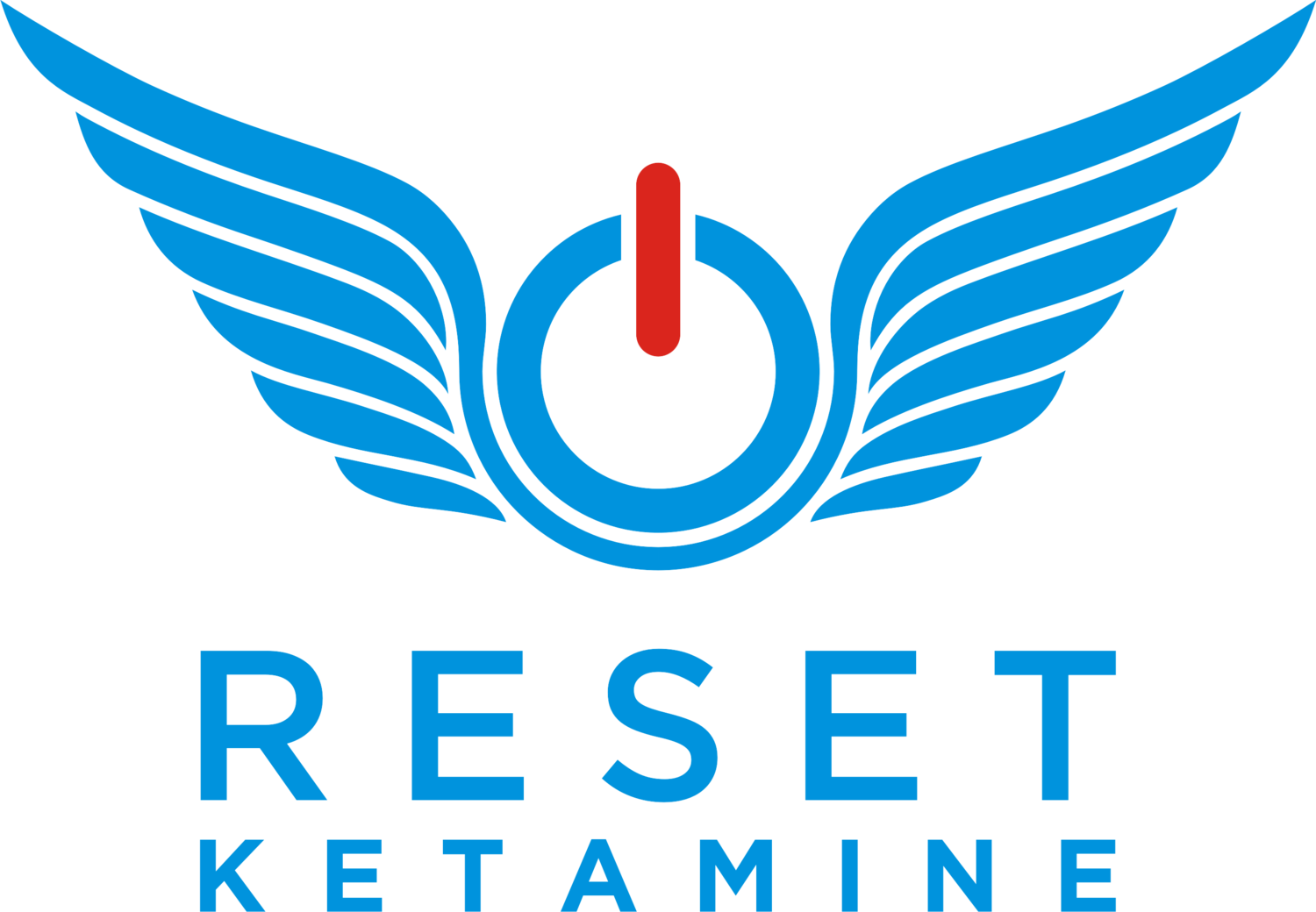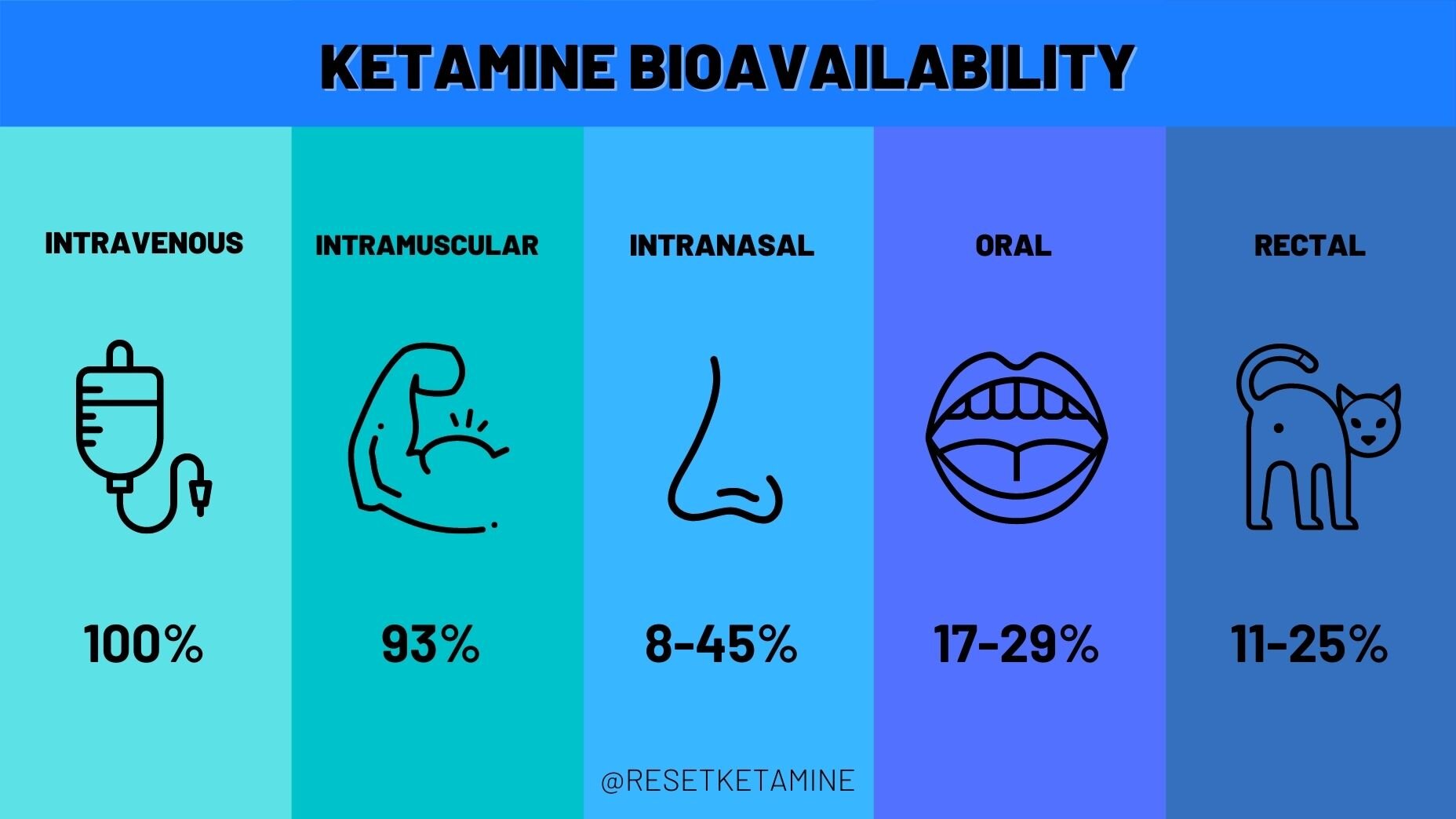Most people don’t like getting poked with a needle, while others don’t mind but may be a “difficult stick” i.e. hard to get an IV in or blood drawn from the vein.
So why are these folks getting poked for ketamine infusions instead of getting oral or intranasal ketamine treatments for depression, or other mood or chronic pain disorders?
Reason 1: Intravenous ketamine is 100% bioavailable
Bioavailability means the “proportion of the drug available for systemic circulation intact.” By definition, intravenous ketamine is 100% bioavailable since it is directly administered into the vein.
Intramuscular ketamine is a bit lower at about 93% but can vary depending upon muscle mass and fatty tissue in the location it is injected.
Intranasal ketamine is about 8% - 45% bioavailable, which will vary depending upon factors, such as how much mucus is in the nose & capillary constriction near the membranes.
Oral ketamine studies shows that it is 17% to 29% bioavailable, with a slightly higher absorption if it is a sublingual formulation.
Lastly, you have rectal ketamine which is 11% to 25% bioavailable, but then again rectal administration can be a pain in the butt (pun intended:)
The absorption of ketamine is quite variable depending upon route, but with intravenous ketamine, it is 100% bioavailable and rapidly crosses the blood brain barrier to get the maximal benefits possible.
Reason #2: Able To Deliver An Exact Amount With the Minimal Effective Dose
Intravenous (IV) ketamine can be titrated to the exact milligram and one will always know for sure exactly how much was given.
Furthermore, since all of the ketamine administered gets into the systemic circulation, much less ketamine needs to be used.
Ideally, it’s best to use the minimum effective dose, given the potential risk of liver, gallbladder, kidney, & urinary bladder issues.
Reason #3: More Control Over The Experience
With intravenous ketamine, the rate at which it can be administered can be increased, decreased, or can even be stopped at any time. Since ketamine is known to create non-ordinary states of consciousness (read more about the 4 types of experiences with ketamine), for someone who is not prepared or has a change of mind midway through, it can easily be stopped.
This means a patient can “stop the ride” anytime they choose to.
Although most patients finish their treatment completely, it’s nice to know that one can simply ask the doctor to stop the infusion if it becomes too much to handle. Also, if the patient isn’t feeling the effects, more ketamine can be added or if the effects are too strong, the dose can be reduced as well.
Conclusion
There are many ways to deliver ketamine and different opinions about which route is best. We believe that the intravenous (IV) route is ideal in the clinical setting because:
It is 100% bioavailable
Aware of the exact amount entering the systemic circulation
Allows for the minimal effective dose
The ability to change the dose or stop the treatment at any time
Furthermore, having access to a peripheral vein lets us administer other medications, such as anti-nausea medications, anti-anxiety medications, and/or blood pressure lowering medications, if needed.








